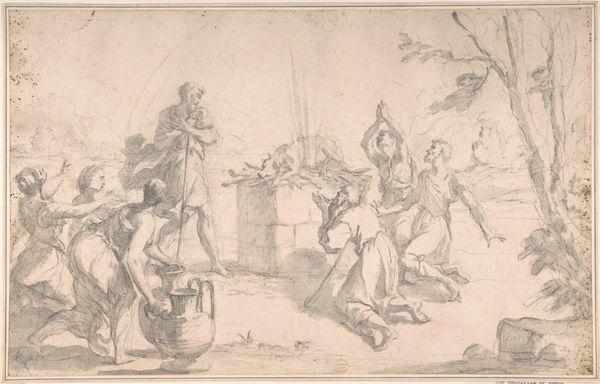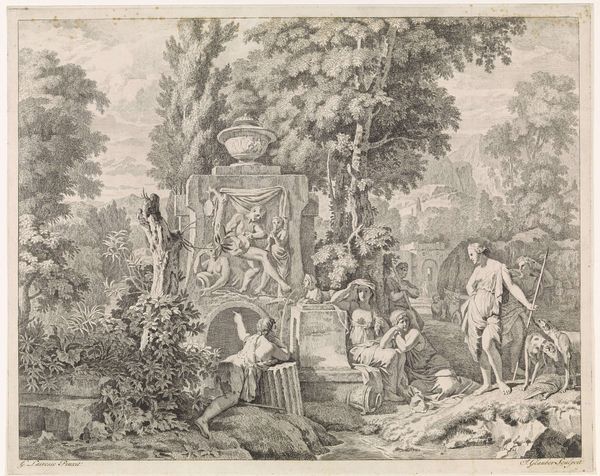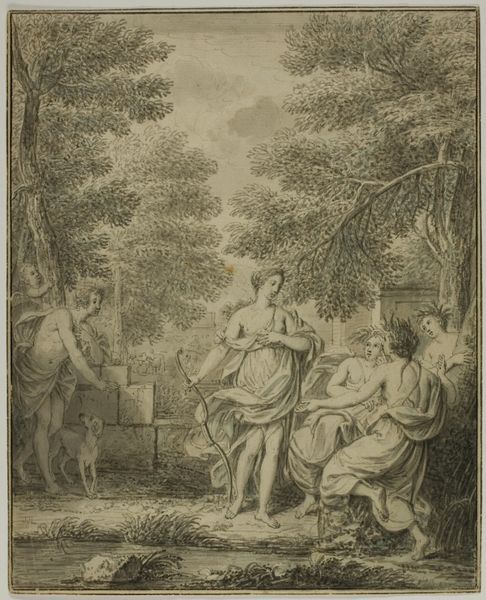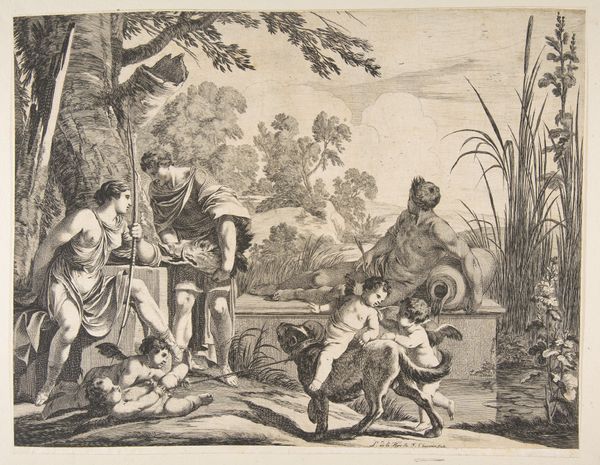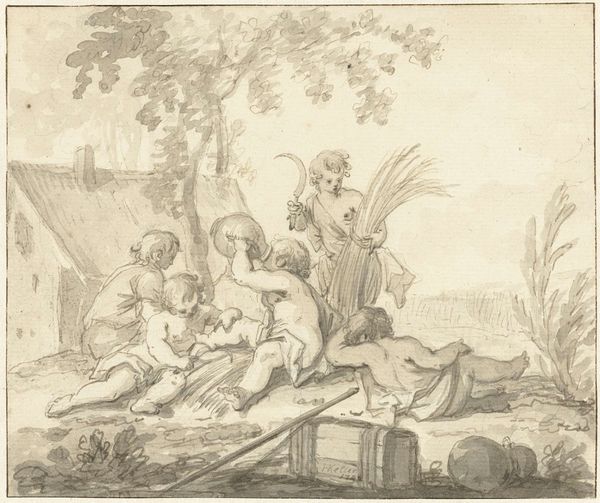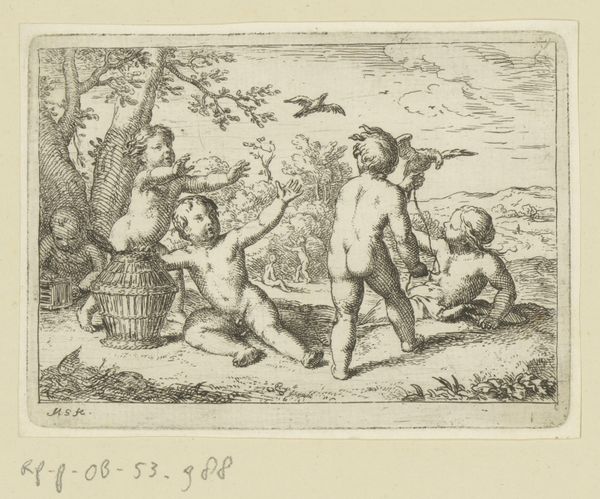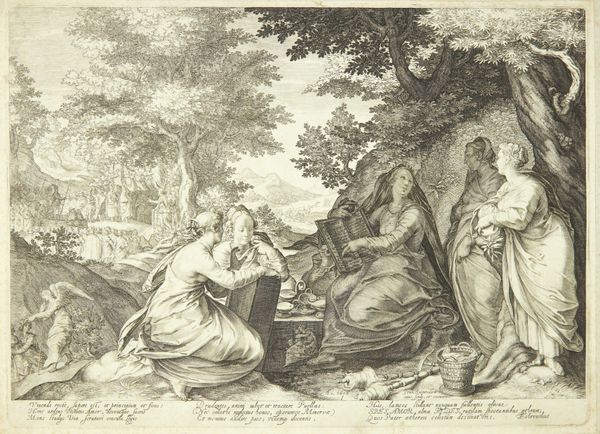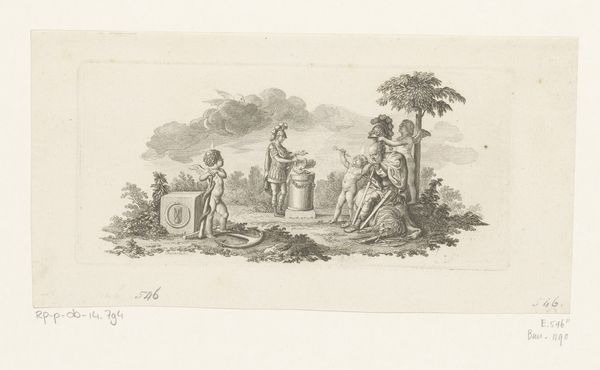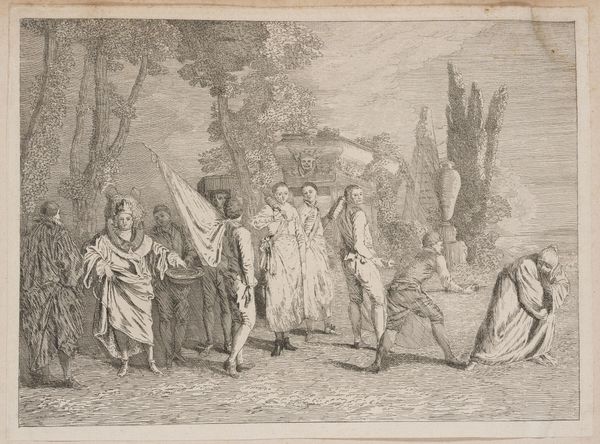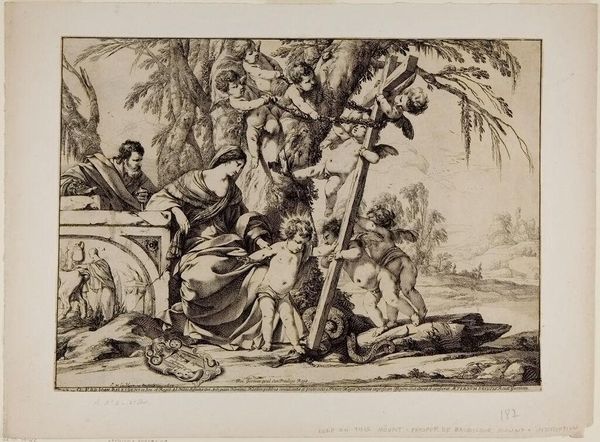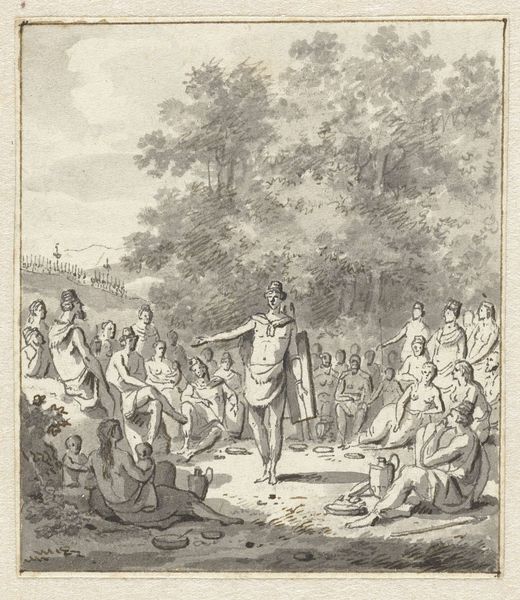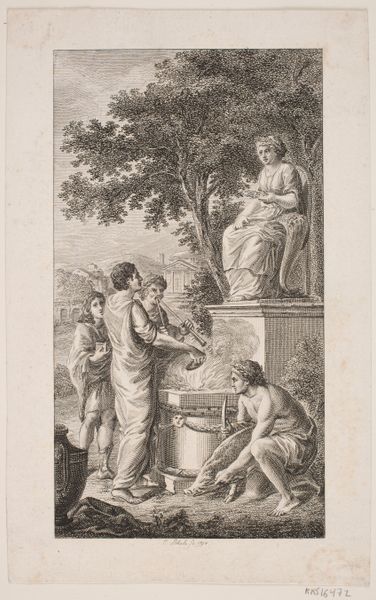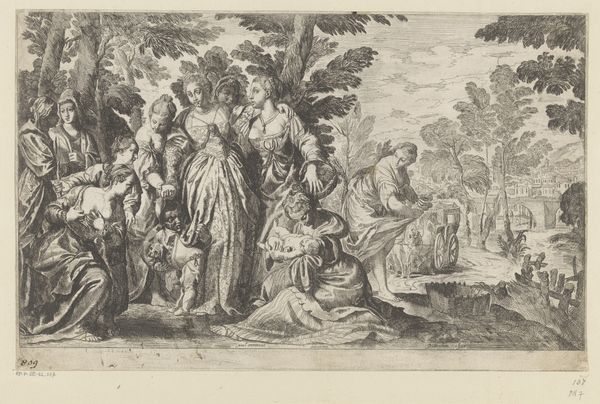
Dimensions: height 233 mm, width 358 mm
Copyright: Rijks Museum: Open Domain
Editor: This is Hieronymus Lapis’s “Eliezer and Rebecca at the Well,” a pencil drawing from sometime between 1733 and 1798. It's such a busy scene, lots of figures gathered around the well. What story do you think it’s trying to tell, and how does it relate to its time? Curator: This piece brings to mind questions around labor and gender in the 18th century. Notice how the women are centered around the well, performing this essential, yet often invisible labor, fetching water. How does this depiction reflect the social roles and expectations placed upon women of that era? And how might that relate to contemporary power structures, and access to resources for women today? Editor: I see what you mean! The women *are* very active in the composition, doing a lot of the work. It makes you wonder about their positions in society. Are we meant to see this work as simply a depiction of everyday life, or could it be a commentary on social norms? Curator: I think it is both a reflection and, potentially, a subtle commentary. The artist has chosen a biblical scene – the story of finding a wife for Isaac - and reinterpreted it. What if we consider how the representation of Rebecca here, offering water, mirrors both a gesture of hospitality and also of servitude? How do these narratives reinforce or challenge patriarchal structures that we continue to grapple with? Editor: That's a really interesting point about Rebecca and the way she is offering hospitality while also, perhaps, embodying servitude. It makes me see the whole scene in a different light, thinking about gender and social dynamics in the past and even now. Curator: Exactly! It is key to interrogate these representations, uncovering their subtle power dynamics and continuing impact. Engaging with historical artworks means continually questioning what stories are being told, by whom, and for what purpose. Editor: This has given me a whole new perspective on how to look at historical art. It is not enough to know the story; we need to consider the power dynamics behind it, and what we can learn from the piece today. Curator: Agreed! Let’s carry that critical lens with us as we explore the next artwork!
Comments
No comments
Be the first to comment and join the conversation on the ultimate creative platform.

